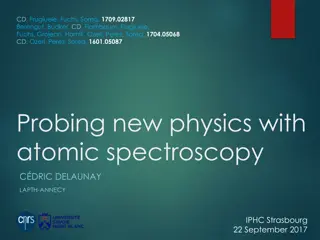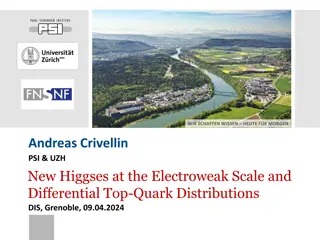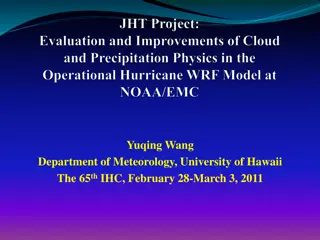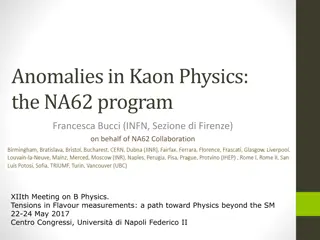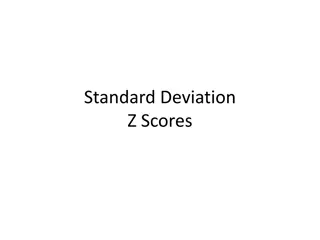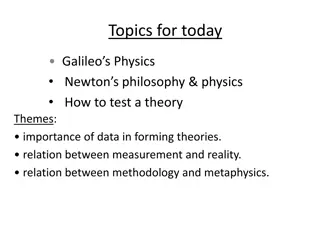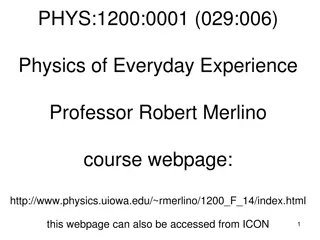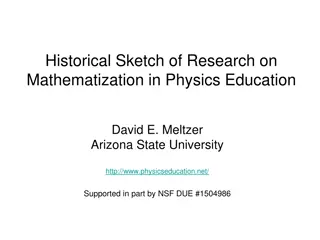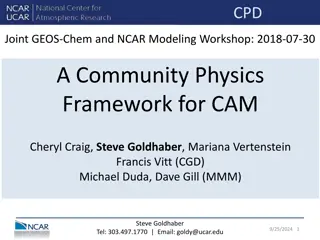Understanding the Standard Model of Physics
Delve into the world of quantum field theory, gauge symmetry, Higgs mechanism, electroweak theory, and more with this detailed overview of the Standard Model. Explore classical mechanics, Noether's theorem, relativistic mechanics, quantum mechanics, and quantum field theory concepts. Discover how the uncertainty principle, particle localization, fields, and the Lorentz group play crucial roles in our understanding of the fundamental forces of nature.
Download Presentation

Please find below an Image/Link to download the presentation.
The content on the website is provided AS IS for your information and personal use only. It may not be sold, licensed, or shared on other websites without obtaining consent from the author. Download presentation by click this link. If you encounter any issues during the download, it is possible that the publisher has removed the file from their server.
E N D
Presentation Transcript
Introduction to the Standard Model Cao Hoang Nam Phenikaa University The 26th Vietnam School of Physics, November 29 - December 11, 2020, Quy Nhon , Vietnam
Plan of Lecture Lecture 1: Basics in Quantum Field Theory Lecture 2: Gauge Symmetry Lecture 3: Spontaneous symmetry breaking and Higgs mechanism Lecture 4,5: Weinberg Salam electroweak theory Lecture 6: Electroweak phenomenology Lecture 7: For solving exercises
Lecture 1: Basics in Quantum Field Theory
Classical Mechanics (Newtonian physics) Space and time in Newtonian physics The state of a (point) particle is described its position in space and its momentum (or velocity) as functions of time
Lagrangian formalism: classical behavior is obtained by the least action principle Noether s Theorem: The conservation laws are consequences of symmetries
Relativistic Mechanics Spacetime in SR
Quantum Field Theory (QFT) When the uncertainty in momentum is bigger than ??, then uncertainty in energy is larger than ??2. Thus, there is enough energy to produce another particle of the same type. On the other hand, we can not localize a particle below its Compton wave length. This means that we would not find a single particle but with no well-defined number of particles. We need to have the objects which describe infinitely many degrees of freedom, at least one for each point in space: Fields 1. A classical field is a collection of an infinite number of harmonic oscillators numbered by space coordinates interacting with neighbourhood oscillators. 2. A classical field is a continuous (differential) function of spacetime coordinates. 3. A particle is defined as an energy quantum or vibration excitation of the field.
Lorentz group Lie algebra of Lorentz group
The representation of Lorentz group (algebra) can be labelled by two indexes (? ,?+) which take values 0, 1/2, 1, 3/2, The dimension of representation (? ,?+) is (2? +1)(2?++1). As addition of angular momentum in quantum mechanics, in the representation (? ,?+) we have states with all possible spin j in integer steps between |?+ ? | and ?++ ? . Scalar field Dirac spinor has four complex components Majorana spinor as real Dirac spinor
Contravariant complex four-vectors Real four-vectors The fields with spin s (=0, 1/2, 1, 3/2, ) are representations of Lorentz (and Poincare) group which leaves invariant the line element of spacetime.
Complex scalar fields Dirac spinor field


